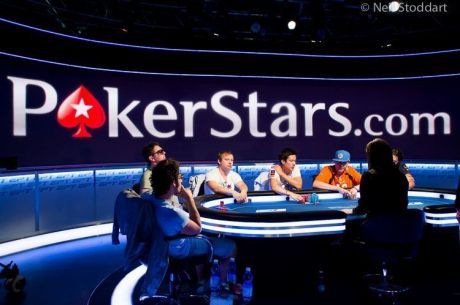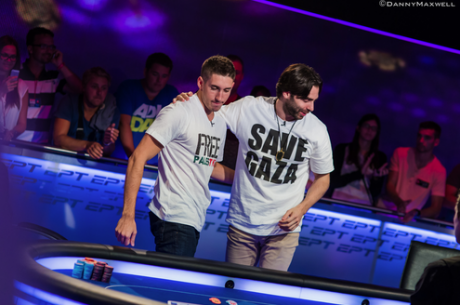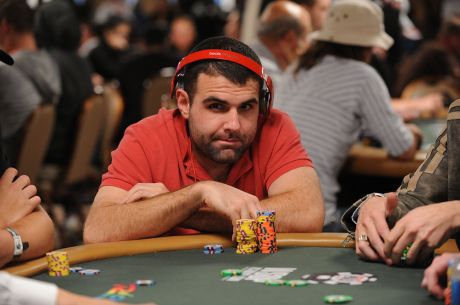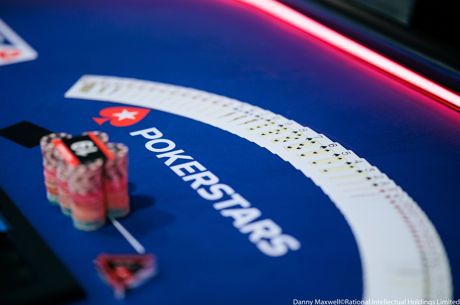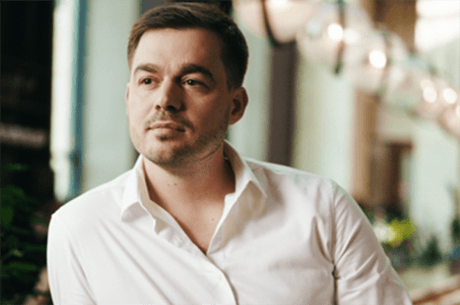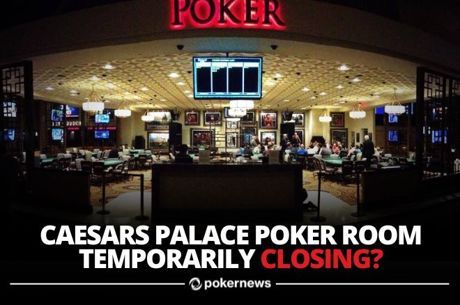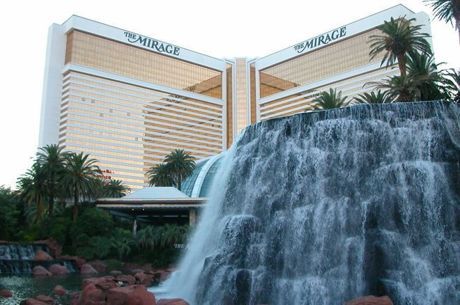James Hartigan Reflects on His Career and Announces Second Season of Shark Cage
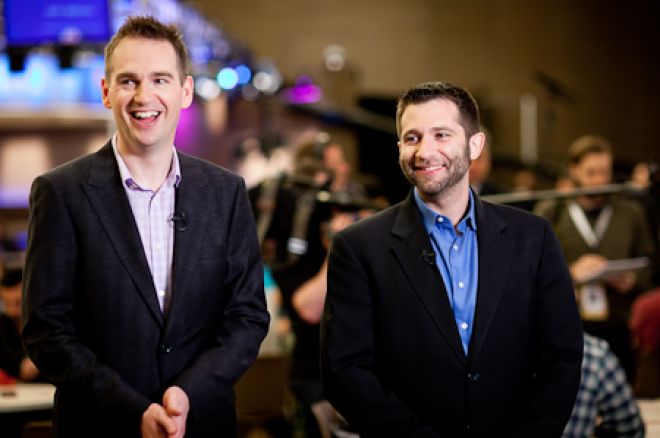
In my life, I often find I am in the midst of a losing battle. A battle to convince my friends, family, work colleagues, and people on the street that poker is genuinely interesting to watch on TV.
No, not just at 3 a.m. when you stumble in drunk and watch a few hands before nodding off.
No, not at 4 a.m. when you suddenly awake having fallen asleep in front of the TV.
And no, not at 5 a.m. when there is "literally nothing else."
It's an engaging, drawn-out war of wills (the poker, not my attempt to convince people to watch it), but what is it that translates great poker into great TV?
To answer that, I turned to James Hartigan, Senior Creative Producer at PokerStarsTV.
"I came into it through the broadcasting side," Hartigan explains. "Freelance presenting for PokerStars. I couldn't keep my nose out of the production process. I was always very interested in the day-to-day production of the television programming. So when I came on full-time, the agreement was I continue to do all of the TV shows and live streams, but I could also work as a senior creative producer; working with both my media and poker hat on."
In particular, Hartigan has worked on developing the new Shark Cage TV series, which remains one of his proudest projects.
Swift-moving, entertaining, and playing on the romance of the "Moneymaker" dream, Shark Cage wonderfully combines some of the biggest characters in poker with one lucky online qualifier. Bluffers who are caught have to spend a round, literally, in a cage.
"I know it caused controversy and has had mixed reaction from poker fans," Hartigan admits, "But it was never designed for a hardcore poker audience. In terms of creating a TV show that appeals to casual fans and combines poker with elements of reality TV and game show, it's really worked well. I'm thrilled to see so many non-hardcore poker fans watching, commenting, and enjoying. We're going ahead with a second season so we can iron out some of the glitches."
But Hartigan's other big project is one which is lifting the lid on the online poker room itself: Inside PokerStars.
Filmed at the online giant's headquarters on the Isle of Man, the show addresses questions which have piqued the interest of players for years, such as ensuring random deck shuffles are indeed random, or the process behind being signed as a pro.
"It's to open PokerStars up to the public and put a human face to the company," says Hartigan,. "And it isn't just controversial things to do with money, it's fun stuff too, such as how our live events are put together or how we hire dealers."
In an age where companies are tearing down walls and becoming more transparent, Hartigan is pulling PokerStars onto the bandwagon in an interesting and innovative way. But the project highlights the dilemma which seems to lie at the heart of his job; how do you keep the established poker community happy while doing the task which PokerStars must most desire: bringing in new blood?
"On the one hand, I'd say different horses for different courses," he muses. "We have different programming strands to appeal to different audiences. But the other thing I'd say is that the hardcore audience is going to watch anyway. And even if they��re not 100 percent appreciative, we know we've got them; if they're interested in the subject matter, they're going to watch.
"So I think it's much more important to open it out. At the same time, I don't believe in dumbing stuff down. Now, having done poker commentary for the better part of 10 years, what used to be pretty basic description of what was going on has developed a language of its own. As the game has advanced so has how you talk about things. Someone coming in new may be a little bit blinded by some of the terminology. My view is that there should be something aspirational about the level at which the commentators are talking. You assimilate and learn. Then, by osmosis, sooner or later you're able to understand what��s going on. There's also this wonderful modern invention called Google, and we're living in the age of the second screen, so the information is always just a click away. You want it to be entertaining and not too heavy, but you want to draw people in and hope that they get up to speed."
But while Hartigan is driving televised poker content forward, I can't help but take him a step back into the past. As a man who has worked in the media for the past 20 years, I'm curious to get his opinion on the evolution process of poker on TV, from the first late-night incarnation to now.
"If we go back to the late 90s, when late-night poker first debuted on TV, I still think there's a lot we can learn from those shows, Hartigan says. "There's been a lot of advance in graphics and information you give the audience, but one thing those early shows had was characters you wanted to know more about; characters that you could get behind, and they had drama. And that's something that is never going to go away. Because ultimately what we want with these shows, or what we should be doing, is telling stories. That's the one thing that remains constant. So for all the development in terms of how the shows are shot, at the core of it is a story."
And a natural gift for storytelling seems to be something which Hartigan possesses in spades. But when it comes to working in TV, he isn't pulling any punches as to the hard work required.
"The poker media didn't exist when I started working, so I came from a media background into poker. It's grown in the last 10 years, so a lot of people are now coming from a poker background into the media. I'm not saying it doesn��t work, but I think you'll have a much smoother transition if you've come from general media �� production, journalism, whatever �� than working in poker. Work macro and then go micro. I'm a broadcaster first and a poker fan second."
But it's hearing the day-to-day aspects of Hartigan's job that make it such an enviable role, and one which was created uniquely for his particular set of talents:
"It's not a simple case of taking a day's poker action and chopping it down to the best 14 hands," he says. "It's about identifying the people you want to follow and telling their story, their battles, and struggles along the way. It's also identifying a theme for each show. What makes the show unique, while adhering to the esthetic style of the series as a whole? The good thing about my world is that every day is different and there's very little repetitive about it. That's why I'm very lucky to do what I do."
And when it comes to the future, Hartigan is putting some big plans onto the development table.
"Shark Cage, we have series two of that. Hopefully we'll be doing a new TV series in a new format towards the end of 2015, which I can't discuss right now. But really the biggest challenge and the biggest mission is to look at 2016 and start thinking about what we do going forward. As mainstream TV sees that transition from linear TV platforms to online delivery, should we be going down the same route?
"For what we do, I think there's still huge value in having a TV presence, in order to get that casual viewer. But as that casual viewer becomes an online viewer, and he will in the next 5-10 years, then obviously I imagine our programming will make the same transition. I think innovation is important, which PokerStars has shown in their gaming product, and we need to do the same. We want to provide great coverage to appeal to the hardcore players, but we also want to create new formats which are going to bring in the next generation of poker players."
And, when it comes down to it, what makes genuinely interesting poker TV?
"Characters, personality, drama, humour, conversation, and a story," Hartigan states.
Hard to argue with that.
For news, updates, and more follow PokerNews on Twitter and Facebook.

